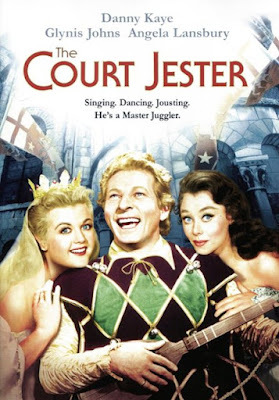Send In Glynis Johns (A Heartfelt Send-Off)

The headlines announcing thedeath of actress Glynis Johns at the ripe old age of 100 tended to focus on her1964 appearance as Mrs. Banks (both a mom and a daffy suffragette) in Disney’smega-musical, Mary Poppins. Sevcral newspapers, notably the New YorkTimes, spotlighted her as a Tony-winner for her 1973 role in StephenSondheim’s A Little Night Music, in which she introduced the poignant“Send in the Clowns.” But her stage and screen successes started early. Comingfrom a long line of performers on both sides of the family, she made herBritish stage debut at age 12. In 1936, she played the trouble-makingschoolgirl at the heart of Lillian Hellman’s bold-for-its-time TheChildren’s Hour. Her move into movies came in 1938: film brought her rolesthat were both dramatic and comedic. By 1949 she was starring in a Britishfantasy called Miranda that today sounds uncannily like the TomHanks-Daryl Hannah 1984 romance, Splash. Playinga mermaid who comes ashore to see London, she was highly praised by New Yorkcritic Bosley Crowther, who gushed, “Glynis Johns is bewitching — one half ofher is, at least — as the coyly flirtatious finny creature.”
She made her Hollywood screendebut circa 1950, again being cast in a wide variety of roles. Though comedy washer forte, she was Oscar-nominated as a talkative innkeeper in a major 1960drama set in the Australian Outback, The Sundowners. My own first screenencounter with Johns came when I was a small girl delighting in Danny Kaye’sfunniest movie, The Court Jester (1955). This is a mock-medieval romancein which Kaye’s meek character is persuaded to masquerade as the king’s jesterin order to overthrow a usurper to England’s royal throne. The film isenlivened by hilarious wordplay I can still recite (“The pellet with thepoison's in the vessel with the pestle,” and so on). There’s also some wackyjousting and an unforgettable sword-fight in which Kaye’s character, duelingthe great Basil Rathbone in his final onscreen bout, swerves madly back andforth between timid and bold,
In the Court Jester thereare two important female characters. Angela Lansbury plays Gwendolyn, animperious English princess with eyes for the jester. Johns is Maid Jean, one ofthe rebels dedicated to removing the usurper from the throne. As a small girl,I was confused. Jean seemed both bold and smart, admirable qualities, to besure. And she had a wonderful throaty speaking voice I instinctively liked. YetGwendolyn was a princess, and (more than that) a tall blonde. So familiar was Iwith the social norms of the era that I figured she’d be the one who’d end upwith the guy. Happily, though, it turns out to be the short(er) brunette whogets her man. Here, for a change, was a case in which blondes don’t have morefun.
Some twenty years later,Johns IS a blonde, and she too is apparently unlucky in love. (In real life,she was married and divorced four times.) On-stage, in A Little Night Music,she originated the role of Desiree Armfeldt, a celebrated stage actress whosemultiple romantic affairs never pave the way for a permanent union with the oneman she wants. In compensation, she gets perhaps the most memorable song in theSondheim canon, a rueful acknowledgment of where her life has led. It waswritten in a limited range to accommodate Johns’ modest vocal powers whilegiving her a chance to convey strong emotion. Though many famous singers haverecorded it, Sondheim insisted that Johns’ original version was his veryfavorite.
Beverly in Movieland
- Beverly Gray's profile
- 10 followers



